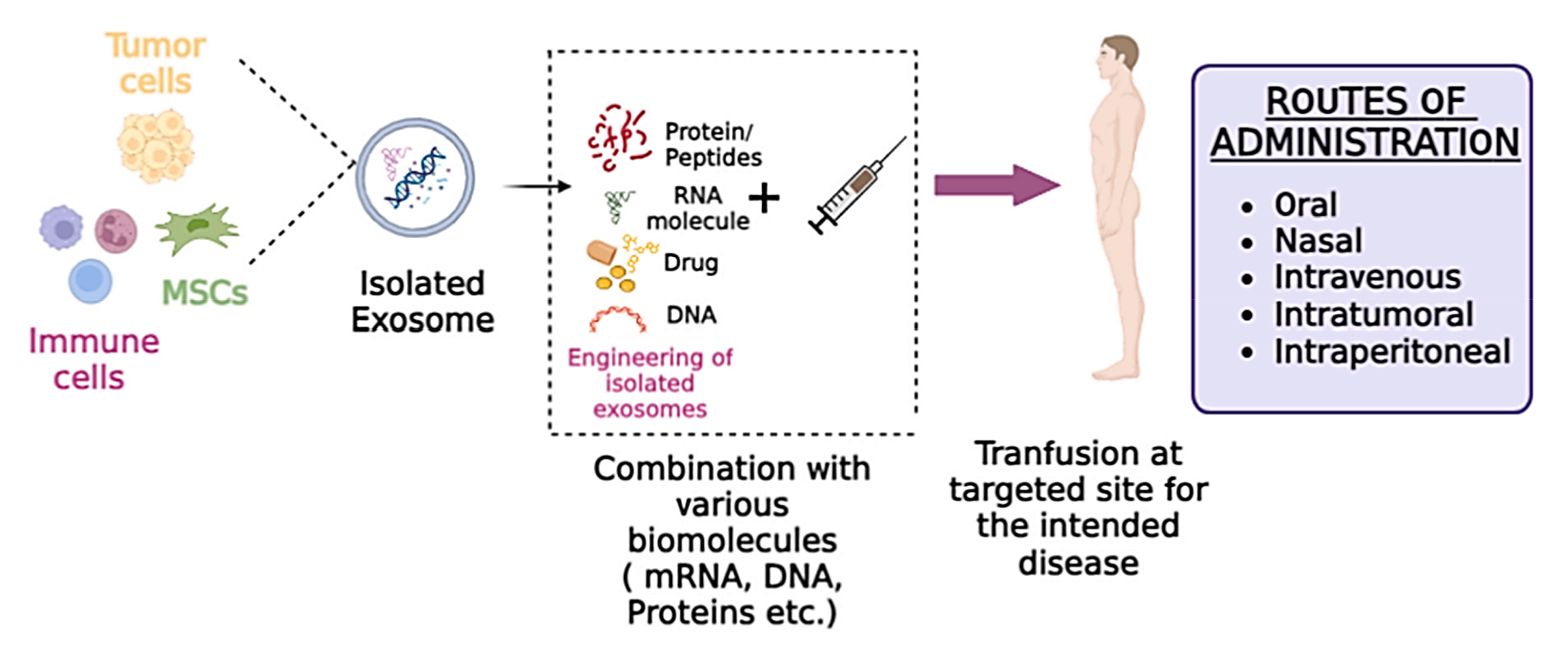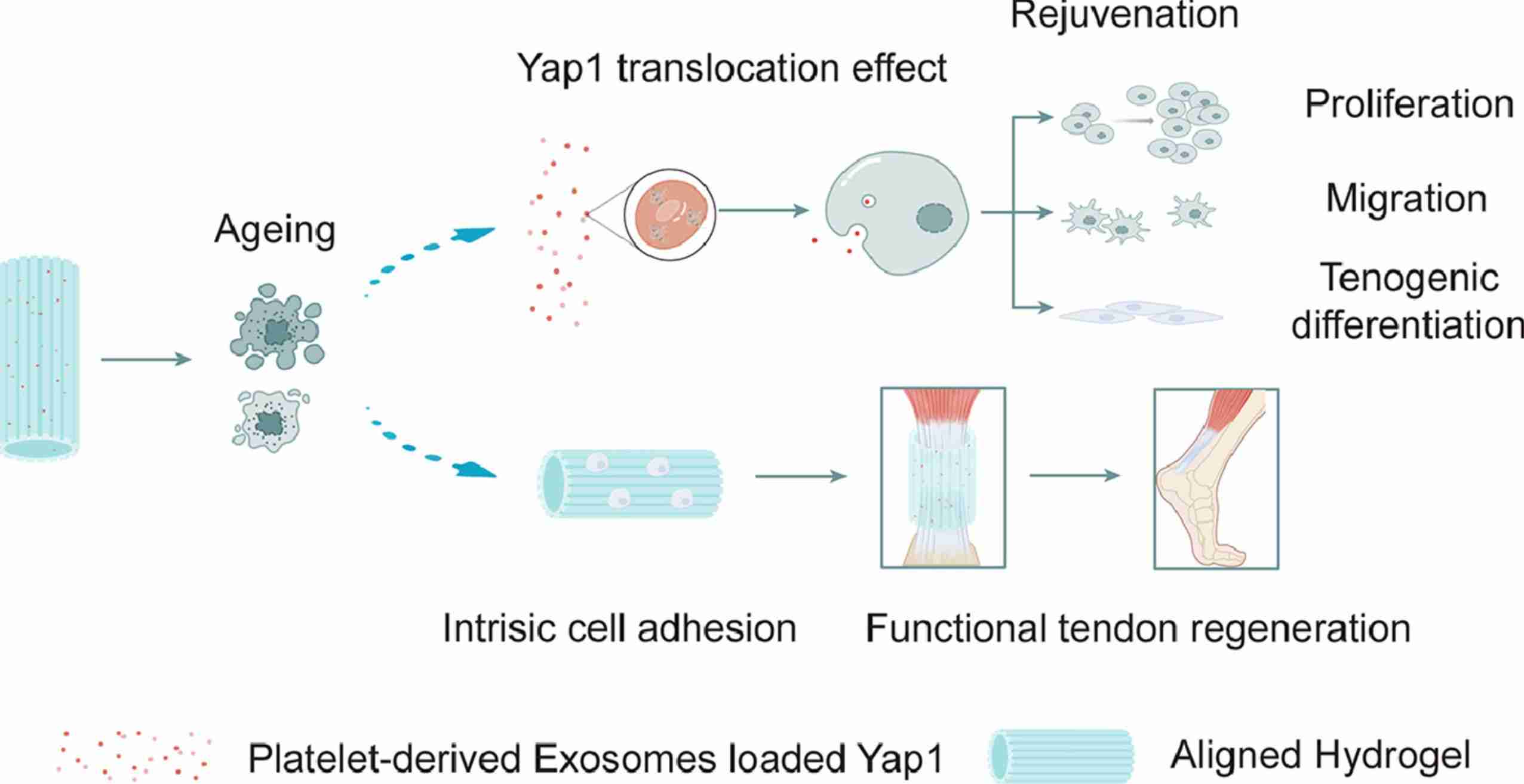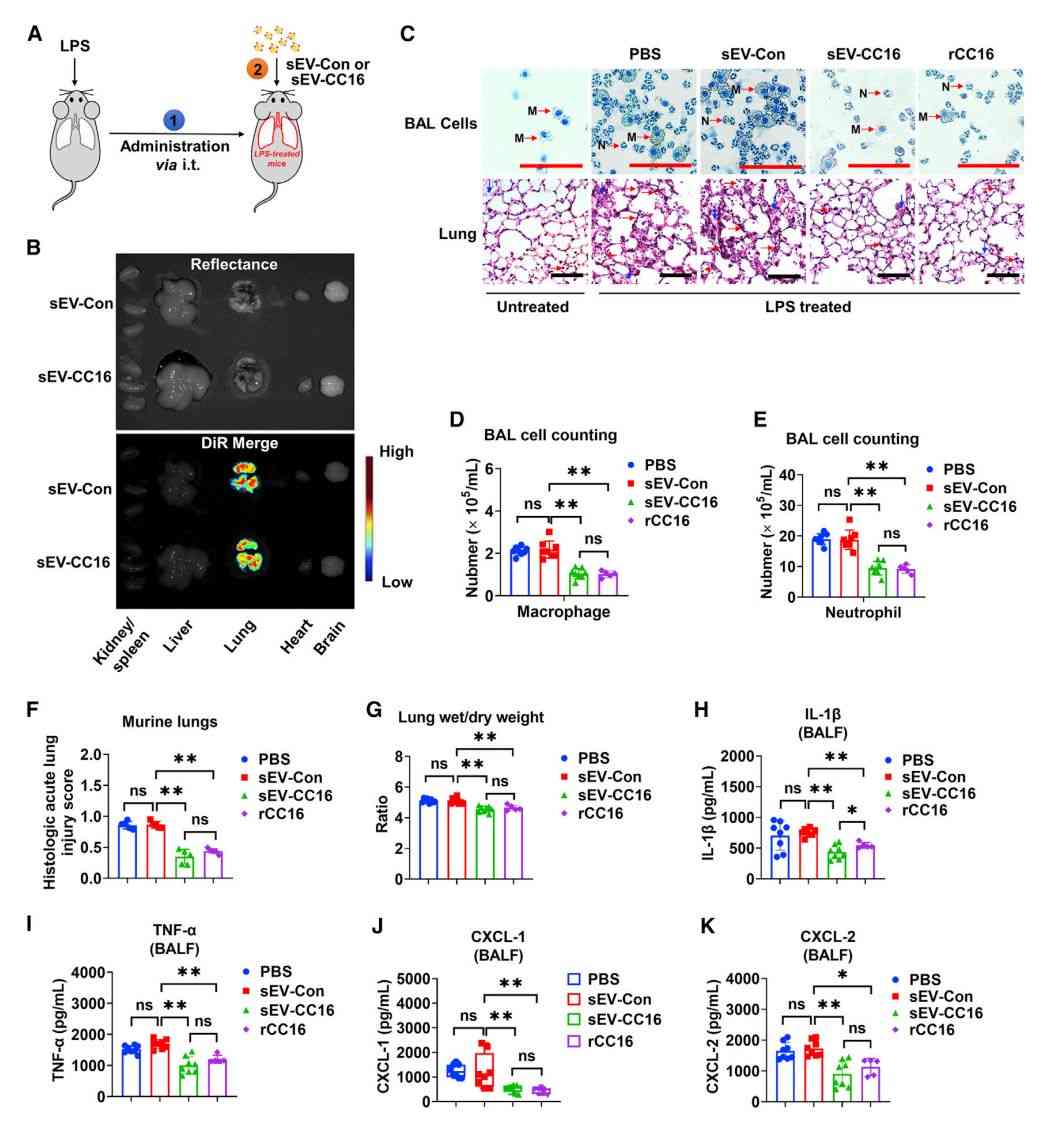Exosomes for Protein Delivery
The emergence of exosome research has provided an effective drug delivery system with high biocompatibility for disease treatment. In recent years, exosomes have been widely used in the pharmaceutical and biomedical fields. Exosomes are an excellent tool for intercellular communication, delivering functional proteins, metabolites, and nucleic acids. Moreover, these nanoparticles resist metabolic disruption and can cross the blood-brain barrier. Thus, exosomes can be used for precision medicine by targeting the underlying cause of the disease.
 Figure 1. Overview of drug delivery using exosomes. (Vriti Sharma, Chitrangada Das Mukhopadhyay., 2024)
Figure 1. Overview of drug delivery using exosomes. (Vriti Sharma, Chitrangada Das Mukhopadhyay., 2024)
Clinical Barriers to Intracellular Therapeutic Proteins
Protein drugs include therapeutic recombinant proteins, monoclonal antibodies, and hormones that interact with specific targets in the body to treat disease or restore normal function. However, they may lose effectiveness through immune response, clearance from the bloodstream, degradation by enzymes, or binding to other molecules. Protein transduction methods have been proposed to deliver protein drugs to target cells in vitro and in vivo. Despite the promising nature of these techniques, exposure of protein surfaces in solution and low folding of recombinant proteins in target cells remain essential barriers to intracellular delivery of therapeutic proteins. In recent years, scientists have proposed several methods for lipid nanoparticle-mediated protein delivery. Of these, exosomes are most widely used as an efficient, stable, and safe therapeutic delivery system.
Advantages of Exosomes for Protein Drug Delivery
Exosomes are natural nanovesicles that have been shown to have the inherent potential to transfer protein cargoes to recipient cells for the targeted treatment of a wide range of diseases. Isolation of exosomes from most cells can serve as a natural carrier for endogenous protein molecules, suggesting that the use of an exosome-carrying mechanism as a carrier for proteins or peptides is appropriate. In addition, exosomes are a naturally occurring ligand for membrane-bound proteins that form microregions internally, providing a natural membrane habitat for biomolecules. This helps to maintain the integrity and biological activity of membrane proteins and therefore the effectiveness of membrane protein therapies is enhanced.
a) Exosomes stably encapsulate peptides and proteins, ensuring their integrity during transport and in the target tissue.
b) Exosomes can penetrate a wide range of biological barriers (e.g., the blood-brain barrier).
c) Peptides and proteins are transported directly into the cytoplasm via exosomes, maximizing the intracellular therapeutic potential of the drug.
d) Modification of exosomes through exosome engineering to aid in the accurate delivery of peptides and proteins to target tissues or cells.
Application Cases for Exosome-Delivered Protein Drugs
The regenerative capacity of endogenous tendon stem/progenitor cells (TSPC) includes self-renewal, migration, and differentiation potential from embryonic to maturation, which leads to functional limitations and disability after tendon injury. Recent research has shown that tendon regeneration and repair are dependent on transcription factors to maintain TSPC function. Exosomes are an effective platform for drug delivery. Researchers loaded purified exosomes from donor platelets (PLT-Exos) with recombinant Yap1 protein (PLT-Exo-Yap1) via electroporation to promote the differentiation potential of TSPC in vitro. The results indicate that PLT-Exos serves as an appropriate carrier platform to deliver recombinant Yap1 into TSPC to modulate Yap activity. PLT-Exo-Yap1 treatment protects TSPC from oxidative stressor-induced stem cell loss and senescence-associated secretory phenotypes (SASPs) via the NF-κB signaling pathway.
 Figure 2. Rejuvenation of tendon stem/progenitor cells for functional tendon regeneration through platelet-derived exosomes loaded with recombinant Yap1. (Lu J, et al., 2023)
Figure 2. Rejuvenation of tendon stem/progenitor cells for functional tendon regeneration through platelet-derived exosomes loaded with recombinant Yap1. (Lu J, et al., 2023)
Acute lung injury (ALI) has a high mortality rate. Research has shown that Club Cell Protein 16 (CC16) is protective against ALI. However, the dose of recombinant CC16 (rCC16) used in preclinical research was supraphysiologic. The researchers found that extracellular vesicle-encapsulated CC16 (sEV-CC16) has anti-inflammatory activity and protects mice from lipopolysaccharide (LPS) or bacteria-induced ALI. sEV-CC16 also activates DNA damage repair signaling pathways. Mechanistically, CC16 inhibits nuclear factor-κB (NF-κB) signaling by binding to heat shock protein 60 (HSP60). The results suggest that sEV-CC16 may be a potential therapeutic agent for ALI by inhibiting inflammation and DNA damage response through reducing NF-κB signaling.
 Figure 3. sEV-CC16 protects against LPS-induced lung injury in mice. (Han Y, et al., 2023)
Figure 3. sEV-CC16 protects against LPS-induced lung injury in mice. (Han Y, et al., 2023)
Our Products
Drug delivery systems (DDS) comprehensively regulate the distribution of drugs or biomolecules in an organism in space, time, and dose. Utilizing cell-secreted exosomes as carriers for delivery applications has great potential in the field of protein therapeutics. Creative Biostructure, as a leader in the field of exosome research, offers a comprehensive range of exosome services. In addition, we offer a range of high-quality exosome products to help clients explore the unlimited potential of exosomes in drug delivery.
| Cat No. | Product Name | Source |
| Exo-CH16 | HQExo™ Exosome-COLO1 | Exosome derived from human colon carcinoma (COLO1 cell line) |
| Exo-CH23 | HQExo™ Exosome-BxPC-3 | Exosome derived from human pancreas carcinoma cell line (BxPC-3 cell line) |
| Exo-SC03 | HQExo™ Exosome-hTERT | Exosome derived from hTERT-immortalized Mesenchymal Stem Cell |
| Exo-SC04 | HQExo™ Exosome-MSC | Exosome derived from Xeno-Free Human Mesenchymal Stem/Stromal Cells and Media |
| Exo-IC02 | HQExo™ Exosome-JM1 | Exosome derived from human T pre-B lymphoblast cell line (JM1) |
| Exo-IC03 | HQExo™ Exosome-Jurkat E6-1 | Exosome derived from human T lymphocyte cell line (Jurkat E6-1) |
| Exo-HDBF-11 | HQExo™ Exosome-SDH-Obesity plasma | Exosome derived from Single Donor Human Obesity plasma |
| Explore All Exosomes Products | ||
Creative Biostructure is committed to providing innovative exosome solutions that enable the efficient development of exosomes as protein delivery vehicles. In addition to upstream exosome isolation and characterization, we also provide downstream exosome engineering services for efficient exosome functional analysis and application development. If you are interested in our services and products, please feel free to contact us! We will open up new possibilities for targeted therapy and personalized medicine.
References
- Vriti Sharma, Chitrangada Das Mukhopadhyay. Exosome as drug delivery system: Current advancements. Extracellular Vesicle. 2024.3:100032
- Lu J, et al. Rejuvenation of tendon stem/progenitor cells for functional tendon regeneration through platelet-derived exosomes loaded with recombinant Yap1. Acta Biomater. 2023. 161: 80-99.
- Han Y, et al. Extracellular vesicle-encapsulated CC16 as novel nanotherapeutics for treatment of acute lung injury. Mol Ther. 2023. 31(5): 1346-1364.
- Chen H, et al. Engineered exosomes as drug and RNA co-delivery system: new hope for enhanced therapeutics? Front Bioeng Biotechnol. 2023. 11: 1254356.